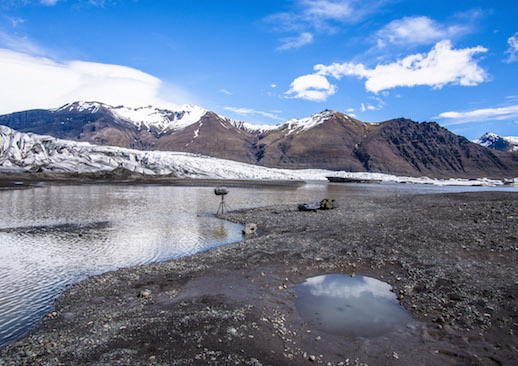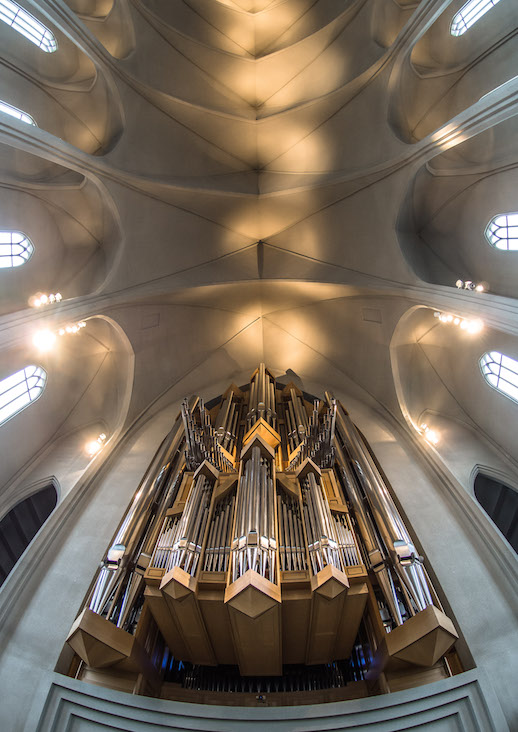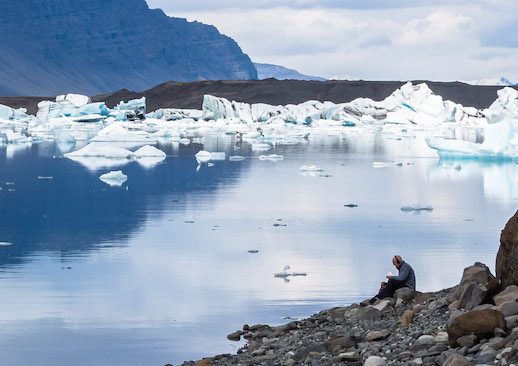 Words and pictures: Richard Youell
Words and pictures: Richard Youell
I’ve always loved the great outdoors and until recently my interest in landscape photography has provided ample excuses to visit new places, climb new mountains, explore coastlines and to be in the very best places to watch the sun rise and set. That is, until an ‘epiphany moment’ that I had a couple of years ago whilst waiting for the sun to rise over a stunning landscape – when I was suddenly struck by the amazing accompanying soundscape. I was hooked – it was like someone had switched on my sense of hearing.
Knowing very little about the craft of field recording I attended a couple of courses organised by Wildeye and run by Chris Watson and Jez riley French, after which, I started to spend more time recording soundscapes than I did photographing landscapes. The next sound recording event in the Wildeye diary was a week in Iceland – somewhere that I had always wanted to visit. After some early procrastination about my attendance, I found myself at the airport with a full baggage allowance of recording equipment, a small camera with a couple of lenses and just enough room for a final kilogram of clean clothes.
I spent my first afternoon in Iceland at the magnificent Hallgrímskirkja church in central Reykjavik. The building is a stunning piece of architecture with incredible acoustics and home to a 5275 pipe, 15 metre tall, 25 ton, pipe organ. I spent a happy hour listening to an organ recital whilst looking around the church, followed by taking the lift up to the top of the tower, where the wind was howling and whistling though the belfry, just in time to hear the clock strike 4pm.
One of the things I like about the Wildeye events is the mix of participants that attend. This trip was no exception. Together with Chris and Jez, the group included some sound artists, an art academic, an ornithologist, musicians, and several from the world of radio, TV and film production. A magnificent bunch of individuals with a fabulously eclectic mix of skills and experience – all with a passion for field recording. On our first evening together we introduced ourselves, shared our specific field recording interests and outlined what we wanted to get out of the trip. For me, I really wanted to get some good recordings of geothermal sites – especially the ‘blup… blup… blub’ of boiling mud. Others’ interests were varied – particular bird songs and calls, ‘Icelandic silence’ and the sound of glaciers calving and icebergs melting. Those with a more artistic intent wanted collections of sounds for various projects and installations including: aerial guy wires ‘humming’ in the wind; the sound of a one hour walk repeated every three hours over a 24-hour period; and the sound of a game of chess in a quiet forest. It was clearly going to be an amazing week!
With two minibuses at our disposal, together with our local guide, Finnbogi Pétursson, who was warmly greeted wherever we went (he appeared to be known by most of the island’s 330,000 population), we were ensured to have access to everywhere that we wanted to go. Day trips usually stopped at several recording locations, with evenings either spent listening to and discussing our recordings, or planning the following day’s schedule. Several evenings and nights were also spent recording, taking full advantage of the near 24 hours of daylight that Iceland enjoys in mid-June. Some of the more ‘touristy’ locations are better visited after midnight, when the coach-loads of noisy visitors have gone home and the traffic noise reduces to almost silence.
A long day-trip on the first day included several stops along the south west coast. An incredible variety of seascape sounds were experienced, from small quiet inlets to black volcanic ‘moonscape’ beaches with large but almost buoyant boulders that crashed into each other as the waves came in. We also spent a happy hour in the sunshine atop some huge sea-cliffs of nesting birds with rolling waves below. The highlight of the day for me was the couple of hours spent at the Seltún geothermal area in Krýsuvík. Boiling hot streams (hot water sounds quite different to cold), hissing and steaming fields of rotten-egg smelling grey/green water and an incredible variation of boiling muds. Wet muds, sticky muds, dry flip-flopping muds and muds boiling away in deep, booming holes – blup, blup, blub! Not the sort of sounds that you can mimic with a closely mic’d Bolognese sauce – the real thing.
The following day our local guide had organised for us to visit the local hydro power station. After donning hard-hats, taking the lift down 40 metres underground and listening to the short safety talk, we had the freedom to roam around the turbines and equipment, placing our microphones and sticking our contact mics wherever we pleased. An incredible array of ‘industrial’ and natural sounds were found here – many of them very loud. The large turbine room was an enormous cathedral-like space which housed the upper bearings of three big turbines, all working at near full capacity that day. As 132 cubic metres per second of water went rushing through the large green spiral pipes at the base of the turbines, 42 Megawatts of power was being generated. Those in the group who are masters of the contact mic, spent their time sticking contact mics to everything that hummed, vibrated, rattled or squeaked – Jez appeared to be in contact mic paradise!
The following day saw a long minibus ride out to the glacier lagoon at Jökulsárlón – a location much loved by photographers for its black lava beaches, turquoise waters and blue icebergs. The sounds there were pretty good too – although we were there during the day with the inevitable background noise of tourists and, at times, their noisy boat tours.
On the final day we did a tour of ‘The Golden Circle’ of tourist locations in the Thingvellir National Park – close to the hotel we had stayed in during the week. We didn’t start the trip until late into the evening to avoid the problems of ‘tourist noise’. We all had a wonderful time getting soaked by the spray whilst recording the tremendous crashing noises of the Gullfoss waterfall before moving on to the geyser at Geysir shortly after midnight. Despite the late hour there were still a few tourists at Geysir. However, when two minibuses full of people with large furry microphones on long boom-poles arrived, they soon got the idea that any talking, coughing, giggling and (especially) any movement of their feet on the gravel was ‘strictly forbidden’ for the next couple of hours. Between sunset and sunrise (about 90 minutes) I gathered enough ‘quiet’ recording material for a 4 minute edited mix of Litli Geysir bubbling and boiling away and three unspoilt eruptions of Great Geysir.
I returned home with many amazing memories and over 60 Gb of recordings and photographs – some of which I have now listened to, catalogued, edited and uploaded. Iceland is an astonishing place – so many sights and sounds to experience – I’ll be back!
This piece was written specially for our latest fanzine, An Antidote to Indifference Issue 13: Field Recording Special #2, which is available in the Caught by the River shop.
More pictures of Richard’s trip are available to view here. To listen to his recordings of Iceland, amongst many other wonderful field recordings, visit his Soundcloud.

